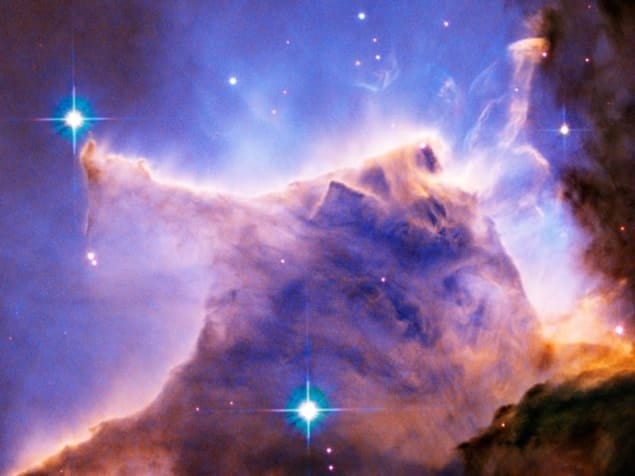The success of recent Shuttle missions has persuaded NASA that it is safe to send astronauts to repair and upgrade the ageing Hubble Space Telescope. Having cancelled all future Shuttle missions to the Hubble on safety grounds following the loss of Columbia in 2003, the agency has now changed its mind and will equip the orbiting observatory with two new instruments. This should keep Hubble operational until about 2013.

Since its launch in 1990 Hubble has made a series of groundbreaking observations of the cosmos, but NASA decided in 2004 that it would not extend its life beyond about 2008, when its gyroscopes and batteries were expected to fail. This enraged astronomers, particularly since they were keen to compare the Hubble’s visible light images with those from the James Webb Space Telescope, which is due to take off in 2013.
Yesterday, however, NASA announced that it is to send a Shuttle servicing mission to Hubble, probably around the middle of 2008. Astronauts will install a new instrument known as the Cosmic Origins Spectrograph to make observations at ultraviolet wavelengths of the elements from which stars and galaxies are formed. A second instrument, called the Wide Field Camera 3, will operate from the infrared to the ultraviolet, allowing astronomers to study more distant, and therefore earlier, galaxies than they can today. The astronauts will also replace one of three Fine Guidance Sensors, which aim the telescope, and attempt to repair a visible and ultraviolet instrument that failed in 2004.
“We have conducted a detailed analysis of the performance and procedures necessary to carry out a successful Hubble repair mission over the course of the last three shuttle missions. What we have learned has convinced us that we are able to conduct a safe and effective servicing mission to Hubble,” said NASA Administrator Michael Griffin. “While there is an inherent risk in all spaceflight activities, the desire to preserve a truly international asset like the Hubble Space Telescope makes doing this mission the right course of action.”
In reaching its decision, NASA had to bear in mind that Hubble is in a very different orbit to the International Space Station, and that the Shuttle crew could not seek refuge in the Station if something went wrong with the Shuttle. But after three successful Shuttle launches since the 2003 disaster NASA has concluded that the risk of an accident is low enough to warrant the Hubble mission. However, the agency will have a second Shuttle ready to launch in case of an emergency.



